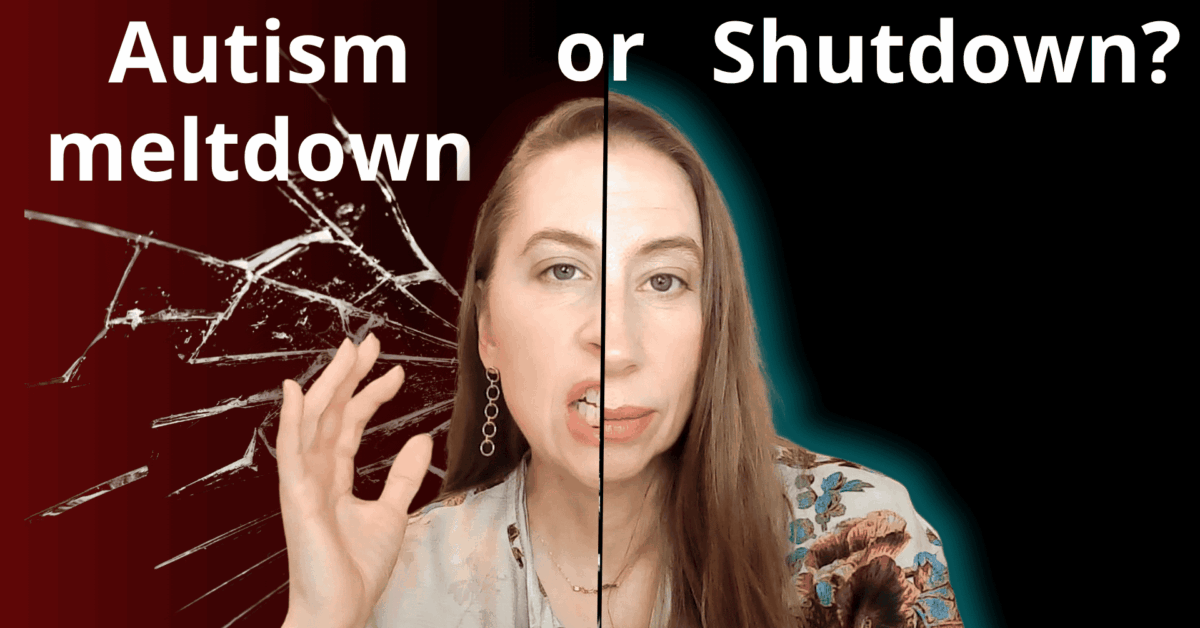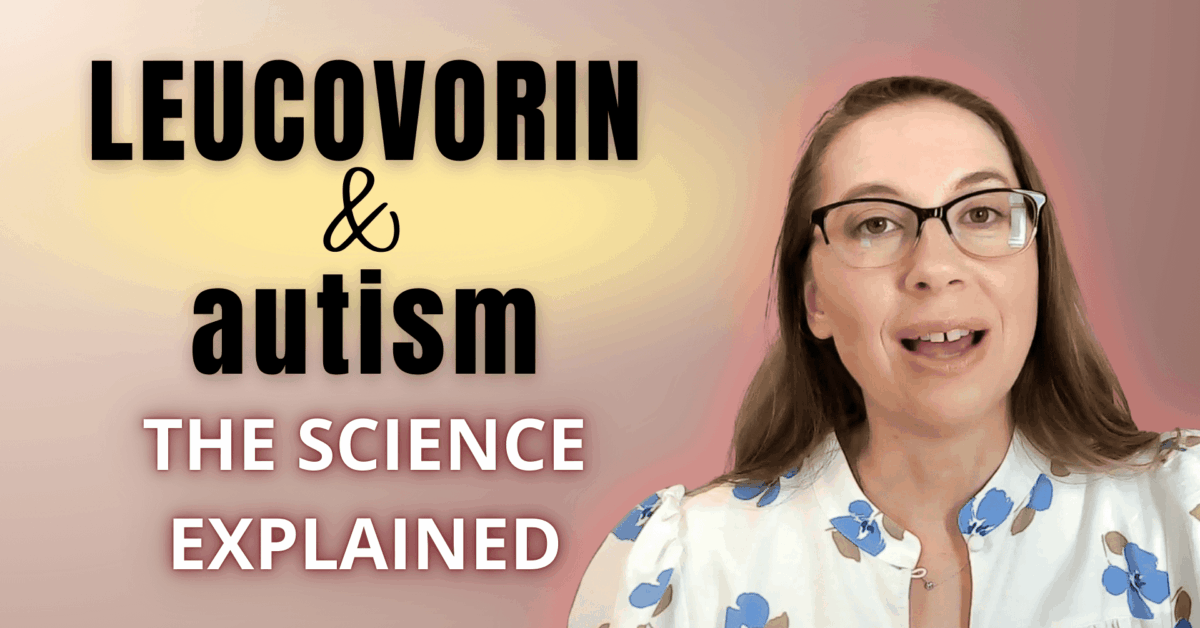He screamed and threw everything off the table. Another time, he curled into a ball and didn’t respond to anything you said.
If your child was recently diagnosed with autism or you’re still waiting for a diagnosis, you might be wondering, what’s the difference between a meltdown and a shutdown?
They’re both intense, they’re both hard to watch as a parent, and they’re both signs that your child is overwhelmed. But how they show up and what your child needs in those moments is totally different. Let’s walk through this together.
What is an autistic meltdown?
If you’re at the beginning of the autism journey, this is something you definitely need to learn to spot and understand. A meltdown is the body saying, “I am overloaded and I can’t hold it in anymore”.
So you might see crying, screaming, hitting themselves or others, or throwing. It’s big energy, big emotions. It can look aggressive, but it’s really a fight or flight response. This is your child’s nervous system short-circuiting from too much input.
There’s either too much noise, too many transitions, too much pressure, too much fun, too much laughter, just too much of everything. It’s not a tantrum, and it’s not a choice. And it often ends in exhaustion for both you and your child. Think of it like a pressure cooker exploding.
What about shutdowns?
A shutdown is pretty much the opposite of what a meltdown is. It’s not loud, it’s quiet. You might see your child go completely silent, hide under a table, go to their room, maybe under the blankets in their bed, stare into space. Or they might just curl up into a little ball on the sofa. They’re not ignoring you; they’re not being rude. They’re trying to protect themselves by withdrawing.
This is a freeze response. They’re overwhelmed, but instead of exploding in a meltdown, they shut down to survive. It’s like a computer going into sleep mode before it overheats.
How to tell them apart?
How can you tell which one you’re seeing?
How does it look on the outside?
For a meltdown, it’s very outward. Yelling, crying, hitting, biting, flailing, lots of movement.
For a shutdown, it’s much more inward. So silence, withdrawing, stillness.
For energy
A meltdown is explosive energy. And for a shutdown, it’s really disengaging.
Now, the causes can be the same, so overwhelm from sensory or emotional input. But it’s how it looks that makes it different.
Recovery
For a meltdown, they need to calm down. They need time to process. You have that explosion, and then you have the calm. For a shutdown. What the recovery looks like is they just need space and time to re-engage.
Now here’s the tricky part. Both can come from the same root cause: overload. Some kids even move from meltdown into shutdown when they’re completely spent.
What can you do in the moment?
Okay, for a meltdown, you can
- Lower the lights,
- turn down the noise.
- If you’re out in public, try and find a quiet, private place.
- Don’t talk. Just keep the mouth as quiet as possible. You don’t need your child to hear more things. You can just tell them, I love you, I’m here for you. That’s it.
- Be present with them. They’ll feel your presence. They’re confident in that bond they have with you, but try not to talk.
- Help them feel safe again when it’s appropriate.
- And know that this entire process takes time. You cannot rush a meltdown. You cannot hurry it along. They’re definitely traumatic at times for everyone.
For a shutdown,
- sit quietly nearby and let them know they’re safe again.
- Don’t try and talk too much.
- Give space. You can tell them again, I love you, I’m here for you. If you need something, just tell me and leave it at that. You can sit nearby without crowding them and let them come back on their own timeline.
As a parent, it’s hard not to take these moments personally, but it’s not bad behavior. This is biology. And the more you understand it, the more confident you’ll be and the stronger bond you will have with your child. That is actually the benefit of meltdowns and shutdowns. You can actually get a stronger bond with your child.
And that’s why we created the Navigating AWEtism platform to walk you through this learning curve and give you science-backed tools that actually help. You are not failing, you’re figuring it out. And your child is lucky to have you.




